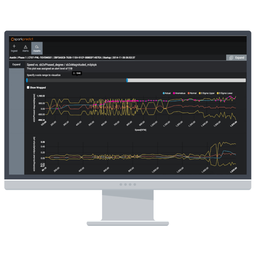Case Studies.
Our Case Study database tracks 18,927 case studies in the global enterprise technology ecosystem.
Filters allow you to explore case studies quickly and efficiently.
-
(5)
- (5)
- (5)
- (1)
-
(2)
- (2)
- (2)
- (1)
- View all
-
(2)
- (2)
- (1)
-
(2)
- (2)
- (1)
- (1)
- (1)
- (1)
- (1)
- View all 5 Industries
- (5)
- (5)
- (1)
- (5)
Selected Filters
5 case studies
|
Aircraft Predictive Maintenance and Workflow Optimization
SparkCognition
First, aircraft manufacturer have trouble monitoring the health of aircraft systems with health prognostics and deliver predictive maintenance insights. Second, aircraft manufacturer wants a solution that can provide an in-context advisory and align job assignments to match technician experience and expertise.
|
|
Cognitive Analytics for Oil and Gas
SparkCognition
Oil and gas companies are having problems learning from the data to understand the different operational states and failure modes of assets, and uses this learning to provide adequate warning before failures occur so operators can plan for corrective actions thus optimizing their Operations and Maintenance budgets.
|
|
Improving Refinery Safety and Efficiency with AI at the Edge
SparkCognition
Historically, Texmark's operations and maintenance teams monitored equipment manually and through wired sensors at a significant cost of dollars and man-hours each year in inspecting equipment on site.Wanting to act quickly and execute on this multi-year plan, Texmark turned to Deloitte to deliver an end-to-end IIoT implementation in late 2017. Over the course of the next two years, Deloitte coordinated the following partners for the project:1. National Instruments to outfit pumps with sensors that collect operational data2. Hewlett Packard Enterprises to enable deployment at the edge3. OSIsoft PI to aggregate the sensor data from the NI sources4. SparkCognition™ to predict impending pump failures5.Flowserve to help develop the model and data flow architecture 6. PTC ThingWorx to create a mobile-supported interface
|
|
Predicting Rare Failures in Hydro Turbines
SparkCognition
Utility companies that operate hydro turbines have a vested interest in performing regular maintenance to prevent unexpected failures. Most maintenance occurs on a scheduled basis where the asset is taken offline, inspected, and repaired proactively if needed. Hydro turbine units are highly reliable, meaning that few examples of unplanned downtime exist. However, these failures are very costly to their operators.Given the sensitivity operators have to unplanned downtime, many have equipped turbines and generators with sensors and platforms to collect valuable performance information in real-time. But because there are so few historical hydro failures to compare against, rich streaming data and legacy statistics-based analysis are not very accurate at predicting true failure events. In fact, they often create more problems by overloading monitoring teams with benign false positives that result in unnecessary downtime to evaluate. This begs the question: Can artificial intelligence help maintenance teams extract more value out of their data?
|
|
Identifying Vane Failure From Combustion Turbine Data
SparkCognition
In late 2015, a deployed combustion turbine experienced a row two vane failure, which caused massive secondary damage to the compressor, resulting in nearly two months of downtime and up to $30M in repairs costs and lost opportunity. This failure, though rare, is representative of typical catastrophic events that are very difficult to catch. Though the onsite plant operations team had been monitoring the asset, this specific failure mode was previously unknown and very nuanced, and existing alarms did not have enough information for SMEs to properly diagnose it in time.The OEM decided to evaluate SparkCognition’s predictive analytics solution, SparkPredict®, with the following objectives:1. Demonstrate the ability to detect and distinguish operational and anomalous online steady-state conditions based on blind data provided from the turbine.2. Provide additional insights about the key contributing factors to the underlying anomalies.3. Provide a UI that interfaces to live streaming data from the asset.
|






